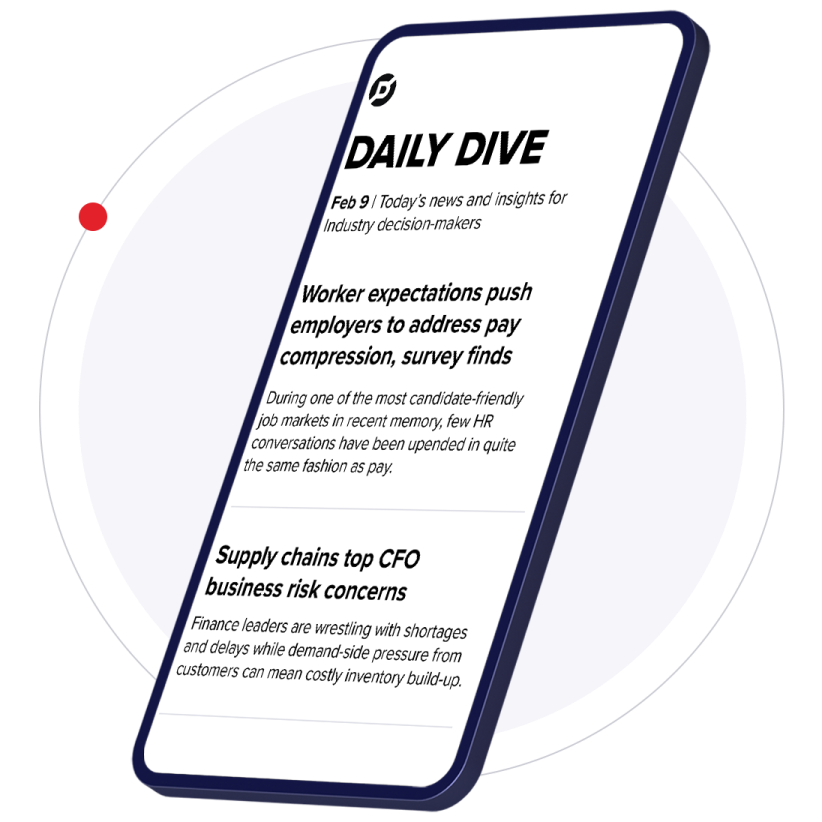As 2018 gets underway, it's shaping up to be a big year for mobile marketing, with budgets expected to grow, major mergers and IPOs in the works and the arrival of Harry Potter in our world via an augmented reality (AR) game.
Core challenges will remain, like the proliferation of sub-channels and the need to create more seamless mobile experiences, but marketers are more convinced than ever of mobile's crucial role in activating adjacent channels. With all signs pointing to the growing prevalence of integrated connected experiences moving forward, savvy marketers will double down on digital assistants and AR to gain crucial experience in preparation for the future.
Influencers, social media, chatbots and messaging apps will all remain a focus as brands look to engage millennials and their younger cohorts, Gen Z. Connecting with the upcoming generation of digital natives promises to be a tough nut to crack, with early efforts pointing to two strategies with potential: choose-your-own-adventure storylines and being good corporate citizens.
Below, Mobile Marketer takes a look at six overarching trends that will impact mobile marketing in 2018 and some of the ways marketers are likely to respond:
When worlds collide
It's widely agreed that seamlessly integrated offline and online experiences that are contextually relevant in real-time and provide meaningful value will become ubiquitous in the future. While this vision won't become fully realized in 2018, significant advances will be made.
"Combining [visual search and image recognition] with AR and artificial intelligence will enable new experiences beyond words."

Thomas Husson
VP and principal analyst, Forrester Research
A couple of clear-cut ways forward will be evident in the months ahead, including broader adoption of Facebook's offline conversions API, which was introduced in 2017 and provides insights into what influences online shoppers to shop in-store and vice versa. This will open up opportunities for better targeting, promotions and budget distribution, according to Lisa Cucinotta, VP of accounts at Adaptly, in emailed comments to Mobile Marketer.
"[…] The impact of the data it provides is really too exciting to ignore for brands who have not tapped into it yet," she said.
Visual search and image recognition will be another area of focus this year. Already, a number of retailers have introduced image recognition as a service, including Target, which is using Pinterest's Lens technology for visual search. In 2018, more brands will take steps to ensure their product design and brand aesthetic is easily recognizable by visual search technology, Liz Tavera, senior strategist at R/GA Austin, said in an email.
More sophisticated integrations that combine visual search, image recognition, AR and QR codes in a way that's valuable to consumers will be the biggest challenge. Those who leverage contextual data and artificial intelligence to boost the experience likely to gain an edge.
"I'd expect visual search and image recognition to start growing in importance," said Thomas Husson, VP, principal analyst for marketing and strategy at Forrester Research, told Mobile Marketer. "Combining these technologies with AR and artificial intelligence will enable new experiences beyond words."
Ephemeral content
The growth in the use of vertical video by brands in 2017 was a significant step forward in creating content that's conceived from the beginning for mobile users. In 2018, marketers will build from there to develop marketing strategies focused on the unique use case for mobile content, including ephemeral content.
Snapchat showed the power of ephemeral content, which is more than a fad and speaks to the way that communicating via photo and video on a smartphone has become an integral way that people communicate. Instagram and Facebook have jumped on board with their own versions of short-lived content. Savvy marketers will look for ways to make ephemeral content work for them — something that will be a challenge as a typical goal of marketing is to create content that stands the test of time.
"People originally thought [ephemeral content] was just a fad in the beginning, but in this day and age, people want data, and they want everything at their fingertips in such a quick way," said Rob Kabrovski, VP of accounts at Adaptly, in an emailed comment. "They don't save all their pictures anymore, they don't have time to go back and reminisce on the past because there is so much going on in the here and now. This kind of instant, fleeting content makes sense."
The year of AR
AR gained significant steam last year, clearing the way for the technology to reach critical mass in 2018. Along the way, a platform war between Apple, Facebook, Google and others will escalate as they race to become a dominant entryway for consumers' AR experiences. Technology that adds digital overlays to the real world will be a key building block for the integrated connected experiences likely to dominate engagement opportunities in the near future.
The winning platforms will be those that can offer wide access and easy-to-use tools for marketers. So far, Apple with its ARKit appears well-positioned to be a leader. However, Google recently dropped Tango in favor of ARCore in large part because the latter is easier to use for developers. Google clearly wants to boost Android's role in AR, although fragmentation will be a challenge. AR experiences are at their best when they take advantage of a phone's built-in sensors, but there is little consistency in Android phones with so many different companies making them, which could result in disappointing user experiences. Apple, with its walled garden, has the advantage here.
"2018 will finally be the year that augmented reality is understood with the Harry Potter AR game from the maker of Pokémon Go."

Adam Fingerman
CEO and co-founder, ArcTouch
Expect a steady stream of AR apps over the coming months. Gaming and social AR apps, in particular, are likely to educate consumers about the technology, paving the way for broader use, Forrester's Husson said.
One AR app that marketers will pay close attention to is a recently announced Harry Potter AR game from Warner Bros. and Niantic — the company behind the hugely popular Pokemon Go game that lit the spark under the AR fire — which is expected out some time this year.
"2018 will finally be the year that augmented reality is understood with the Harry Potter AR game from the maker of Pokemon Go," said Adam Fingerman, CEO and co-founder of ArcTouch, in an email to Mobile Marketer
Voice poised to become a primary interface
Consumers got a taste of the ease and convenience of asking for what they want via chatbots, digital assistants and smart speakers last year. In 2018, they will want more voice-based engagements, meaning the major platforms, as well as marketers, will be tripping over themselves to be the first to provide new experiences and value in the hope of gaining customer loyalty.
"While we're not about to say that the graphical user interface of the touchscreen is dying, there's little question that in 2018 voice will become a primary interface to the digital world," ArcTouch's Fingerman said.
It's clear that consumers are enamored of voice-driven connected experiences. A recent Strategy Analytics survey found that 24% already own at least one smart speaker and, among current owners of either an Amazon Echo or Google Home device, more than two-thirds are planning to buy another smart speaker within six months.
"The world is going mobile in a different way through voice."

Sheryl Kingstone
Research director of customer experience and commerce, 451 Research
Amazon is pushing hard to shore up its leadership role, including licensing Alexa for integration into a host of new devices like thermostats, home lighting systems, remote controls, automobiles and more. The company is also reportedly working with major brands like P&G on expanding opportunities for sponsored product ads.
Meanwhile, Google will build on a couple of big wins last year like signing on Walmart — whose e-commerce CEO recently talked up the potential of voice assistants — and Target for voice-based shopping via its assistant, taking a swipe at Amazon's e-commerce leadership. While purchasing via smart devices is still in its early days, it could be an important use case going forward.
Apple's imminent entry via HomePod could stir up the space even further. With significant adoption potential in 2018, the challenge for marketers in voice engagements will be to personalize and contextualize these experiences, per Forrester's Husson.
"It requires to change your mindset and think beyond mobile as a device or a channel," he said. "That's why mobile first is not enough. Mobile is a catalyst for business transformation."
Developers and marketers will also need to focus on eliminating friction points and creating scalable engagements, Sheryl Kingstone, research director of customer experience and commerce at 451 Research, told Mobile Marketer. For example, there needs to be an easy way to push the information for an interaction on an Echo device to someone's phone.
"The world is going mobile in a different way through voice," Kingstone said. "I'd like to see that be multi-modal."
Deal-making abounds
Consumer-facing companies will be looking for strategic acquisitions and partnerships that can better position them in a mobile ecosystem dominated by Apple, Amazon, Google and Facebook in 2018. At the same time, the major digital platforms could find a compelling reason to accelerate their acquisition strategies this year thanks to the new tax bill. It will be harder than ever for independent companies to thrive in this environment.
Two likely acquisition targets are traditional media companies — Disney's recent $52.4 billion deal to acquire 21st Century Fox is one example — and brick-and-mortar retailers, segments that continue to struggle as consumers increasingly rely on their smartphones to consume content and shop.
Amazon could make another major retail acquisition like it did last year with Whole Foods — Target, Nordstrom and Lowe's have all been floated as potential acquisition targets — while Apple could be eyeing Netflix, IBM and any other company that could boost its focus on digital entertainment and AI-driven experiences.
There will be more initial public stock offerings but they may not garner the same level of excitement as last year's IPO for Snap, the parent company of Snapchat. In part, this is because the post-IPO experience — with Snapchat struggling to add new users — may have left some investors feeling less bullish about the potential of mobile-first platforms.
The mobile stock offering likely to gain the most attention is Spotify — which filed confidentially for a direct listing in late 2017, meaning it can offer shares on an open market without underwriters setting an initial price. Ride-hailing apps Uber and Lyft are preparing for their own IPOs but it's not clear that either would be ready in 2018. Uber is still trying to clean up the mess following widespread allegations of a toxic work environment and the exit of CEO Travis Kalanick. Lyft, not burdened with these issues, could surprise and file this year in an attempt to gain an edge over the larger Uber.
Next-generation data management
There's still a lot of room for reducing friction around ads and e-commerce on mobile and one way to accomplish this is by building the kind of customer intelligence that enables marketers to make real-time decisions in terms of which ads to serve and which products to promote to an individual.
For example, some advanced marketers in the retail and financial services sectors are starting to apply machine learning to synthesize data across CRM, behavioral, social and location to build more precise customer identities, creating what 451 Research's Kingstone refers to as customer intelligence platforms, which is the next generation beyond customer data platforms. Such platforms will be particularly important when it comes to bridging digital and physical experiences.
"Without this underlying infrastructure, you are never going to have success on mobile," said Kingstone.
























